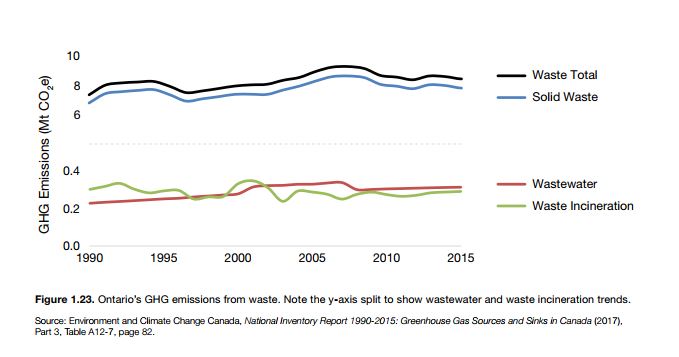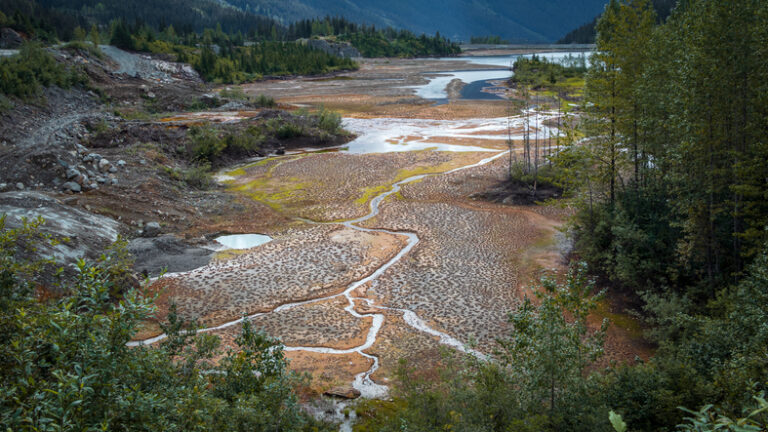The Office of the Environmental Commissioner of Ontario (ECO) has released its annual Greenhouse Gas Progress Report for 2017, Ontario’s Climate Act: From Plan to Progress, which found that the province is improving in managing GHGs, but that it has progress to make, some of which can be achieved through water management solutions.
Ontario’s Waste sector drew ECO’s attention, as the sector’s emissions were 16 per cent higher in 2015 compared to 1990. “This was due to an increase in estimated solid waste emissions (mostly methane) and, to a lesser extent, wastewater emissions (mostly nitrous oxide),” stated the report.

Saxe pointed to climate change mitigation activities in the building sector as another area of positive growth. This included Ontario Regulation 20/17, Reporting of Energy Consumption and Water Use, which came into force last year. The regulation requires large buildings to report their energy and water use and GHG emissions. Saxe also noted proposed building code changes from July 2017 that “would also see the installation of hurricane straps and backwater valves in new houses as part of climate adaptation.”
Favourable policies either implemented or proposed in 2017 that would benefit the environment were listed by the ECO. Here we note those that would have a substantial impact on water resources:
- FEB 2017: “Ministry of the Environment and Climate Change releases the Lake Simcoe Climate Adaptation Strategy (Environmental Registry # 011-8148).”
- APR 2017: “Ministry of the Environment and Climate Change approves the revised Drinking Water Quality Management Standard, which requires that system owners and operating authorities consider climate change when assessing risks to a drinking water system (Environmental Registry # 012-5530).”
- MAY 2017: “Ministry of Agriculture, Food and Rural Affairs seeks feedback on developing an Agrifood Renewable Natural Gas for Transportation Demonstration Program (Environmental Registry # 013-0316).” This could make use of methane captured from wastewater processes.
- MAY 2017: “Ministry of Municipal Affairs seeks input on proposed Building Better Communities and Conserving Watersheds Act, 2017, which would amend existing legislation to give communities a stronger voice in land use planning. This would include supporting government priorities on climate change (Environmental Registry # 013-0590).”
- JUN 2017: “Ministry of the Environment and Climate Change seeks input on development of proposed Low Impact Development Stormwater Management Guidance Manual (Environmental Registry # 012-9080).”
- JUL 2017: “On July 1, 2017, O. Reg. 20/17, Reporting of Energy Consumption and Water Use came into force, requiring large privately owned buildings and some industrial buildings to report building energy, water, and GHG emissions data to the Ministry of Energy on an annual basis (Environmental Registry # 012-6904).”
While Ontario’s emissions are the lowest since 1990, when reporting began, there will be challenges in meeting future targets noted the ECO. “There are no more silver bullets,” Commissioner Saxe said.
The report put forward some recommendations for Carbon Offset programs that could take advantage of the successful first year of the province’s cap and trade system. “A price on carbon pollution is a crucial tool we need to slow climate change,” said Commissioner Saxe.
Programs the ECO found favourable to water quality to be included as programs funded by the cap and trade system include:
- Programs to reduce Nitrous Oxide through fertilizer management practices in agriculture received strong approval, which would also provide strong benefits to water resources.
- Anaerobic digestion processes for organic waste were another highly rated for inclusion in the offset program. “The ECO also strongly encourages the government to include food waste and waste streams from municipal wastewater facilities in its definition of project eligibility to maximize organics capture and methane destruction.”
- Urban forest projects were also highly recommended, in part for their ability to “improve water quality and regulate water flow, protecting watercourses and limiting demands on stormwater infrastructure.”
“Reducing greenhouse gas emissions and putting a price on carbon pollution are a good start,” said Saxe. “But this is a complicated process; there is a lot more to do.”
Ontario’s Climate Act: From Plan to Progress can be downloaded at eco.on.ca.










